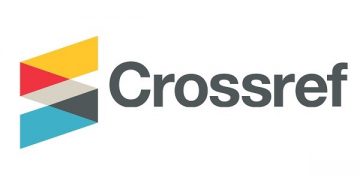A Semantic Study of Connotative Meaning in Television Advertisement Messages
DOI:
https://doi.org/10.61722/jssr.v3i5.5804Keywords:
Semantics, Connotative Meaning, Television AdvertisementAbstract
This study aims to explore the connotative meanings embedded in television advertisement messages through a semantic approach. As a form of mass communication, advertisements do not only convey messages directly (denotatively), but also imply additional meanings that can influence the audience’s emotions, perceptions, and behavior. In this research, the author examines several television advertisements from various product categories—such as food, beverages, beauty products, and digital services—by focusing on the use of symbolism, word choice, and cultural context that shape connotative meanings. The research method employed is descriptive qualitative with content analysis techniques. The findings indicate that connotative meanings in advertisements are often used to build a positive image, evoke emotional responses, and enhance product appeal through associations with social, cultural, and psychological values. These results highlight the importance of understanding connotative meanings in order to foster media literacy and critical awareness of messages received through television broadcasts
References
Berger, A. A. (2013). Media Analysis Techniques (5th ed.). SAGE Publications.
Berger, J. (2013). Ways of Seeing. Penguin Books.
Campbell, C., Sands, S., Montecchi, M., & Jensen Schau, H. (2022). That’s So Instagrammable! Understanding How Environments Generate Indirect Advertising by Cueing Consumer-Generated Content. Journal of Advertising, 51(4), 411–429. https://doi.org/10.1080/00913367.2022.2053901
Chandler, D. (2007). Semiotics: The Basics (2nd ed.). Routledge.
Chandler, D. (2007). Semiotics: The Basics (2nd ed.). Routledge.
El-Dali, H. M. (2019). The language of consumer advertising: Linguistic and psychological perspectives. Studies in Linguistics and literature, 3(2), 95-126.
DOI: https://doi.org/10.22158/sll.v3n2p95
Elliott, J. (2013). Using Semiotics in Media Studies: An Introduction. Sage Publications.
Faiz Ullah. (2024). A SEMIOTIC ANALYSIS OF MULTINATIONAL BRAND ADVERTISEMENTS IN PAKISTAN. Jahan-e-tahqeeq, 7(1), 1260–1277. https://doi.org/10.5281/zenodo.11421022
Handayani, Lilik T., and Rohmani N. Indah. "Denotation and Connotation in Beauty Advertisement: Implication for the Teaching of Semantics." Jurnal Khatulistiwa Informatika, vol. 14, no. 1, 2022, pp. 50-56, doi:10.31294/wanastra.v14i1.11531.
I Gede Jody Agastya, & Ni Wayan Suastini. (2024). A Semiotic Analysis of Verbal and Visual Signs with Denotative and Connotative Meaning in iPhone 14 Advertisements. RETORIKA: Jurnal Ilmu Bahasa, 10(2), 474–482. https://doi.org/10.55637/jr.10.2.9881.474-482
Leech, G. N. (1981). Semantics: The Study of Meaning (2nd ed.). Penguin Books.
Levine, M. P. (2015). The Impact of Media on Body Image: A Meta-Analysis of Experimental and Correlational Studies. Psychological Bulletin, 141(5), 911–936.
Marsha L. Richins, Social Comparison and the Idealized Images of Advertising, Journal of Consumer Research, Volume 18, Issue 1, June 1991, Pages 71–83, https://doi.org/10.1086/209242
Masud Muhammadiah, Muta’allim, Nawiruddin, Lela Susanty, & Zarkasi. (2025). The Role of Linguistics on Influencing Community Associations on Social Media: A Socio-Semantic Study of Commodity Advertisements. RETORIKA: Jurnal Ilmu Bahasa, 11(1), 191–209. https://doi.org/10.55637/jr.11.1.11655.191-209
McQuail, D. (2010). McQuail’s Mass Communication Theory (6th ed.). SAGE Publications.
McQuail, D. (2010). McQuail's Mass Communication Theory (6th ed.). Sage Publications.
Nuweihed, W., & Trendel, O. (2023). The role of informational versus transformational ad appeals in building consumer-based brand equity for low involvement products. Journal of Marketing Theory and Practice, 32(4), 579–598. https://doi.org/10.1080/10696679.2023.2249213
Rajendrah, S., Rashid, R. A., & Mohamed, S. B. (2017). The impact of advertisements on the conceptualisation of ideal female beauty: A systematic review. Man in India, 97(16), 361-369.
Rauf, S. . (2020). Impact of Television Advertisements on Consumer Behavior: Targeting the Young Customers. Print, Radio, TV and Film Studies, 1, 16-28. https://doi.org/10.71016/prtfs/m02f4228
Saussure, F. de. (1983). Course in General Linguistics. Open Court Publishing.
Yadav, A., & Verma, A. (2025). Enhancing digital engagement: The importance of media literacy in social media. Jurnal Kajian Komunikasi, 13(1), 97-116.
Yusnaini, . Y., Nufus, H., Saleh, R., & Wibowo, W. A. S. (2025). The Digital Era and the Evolution of Media Paradigms: A Critical Review of the Adaptation of Old Media in New Media Ecosystems. Society, 13(1), 573-599. https://doi.org/10.33019/society.v13i1.853
Downloads
Published
Issue
Section
License
Copyright (c) 2025 JOURNAL SAINS STUDENT RESEARCH

This work is licensed under a Creative Commons Attribution-ShareAlike 4.0 International License.













